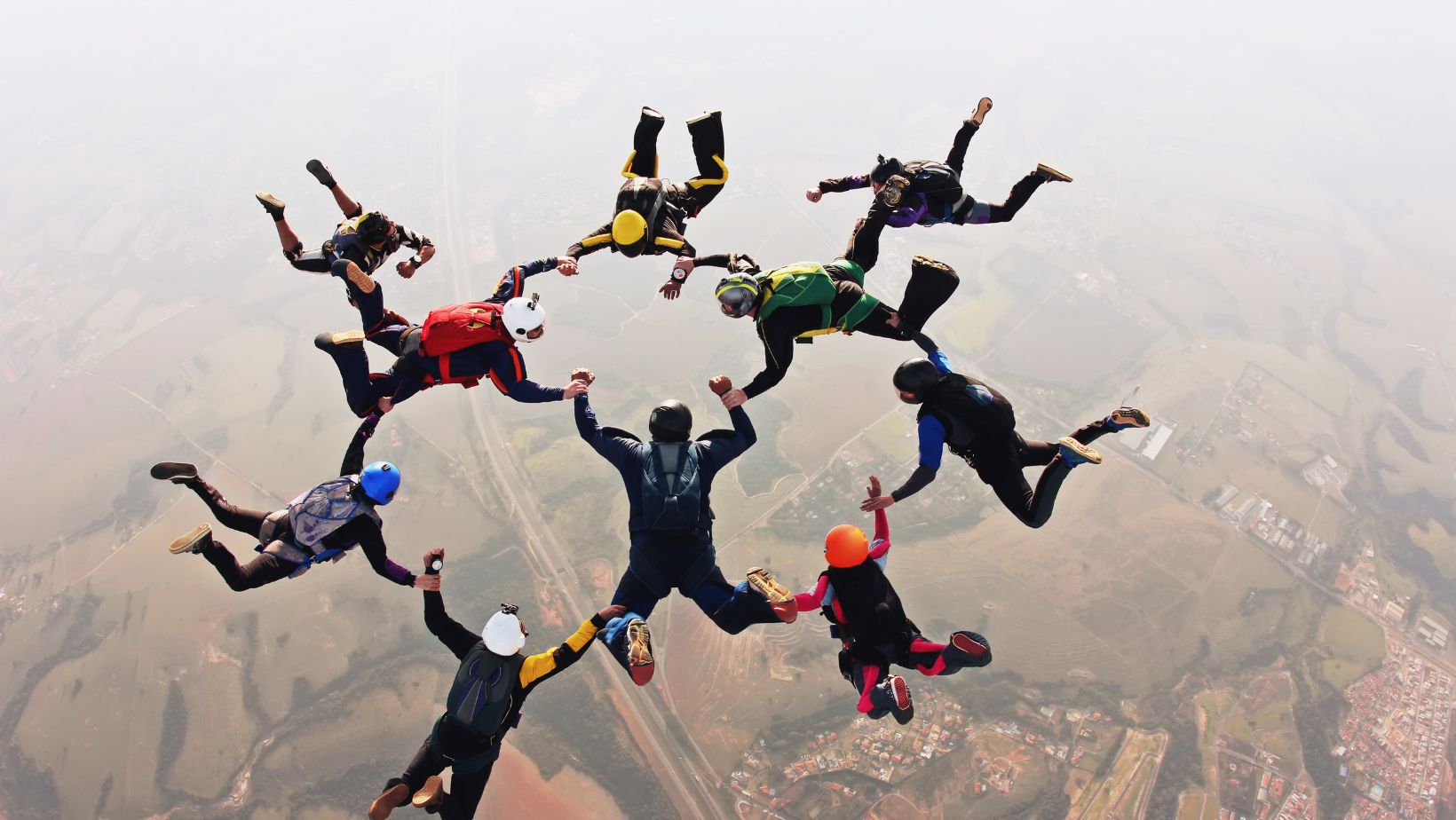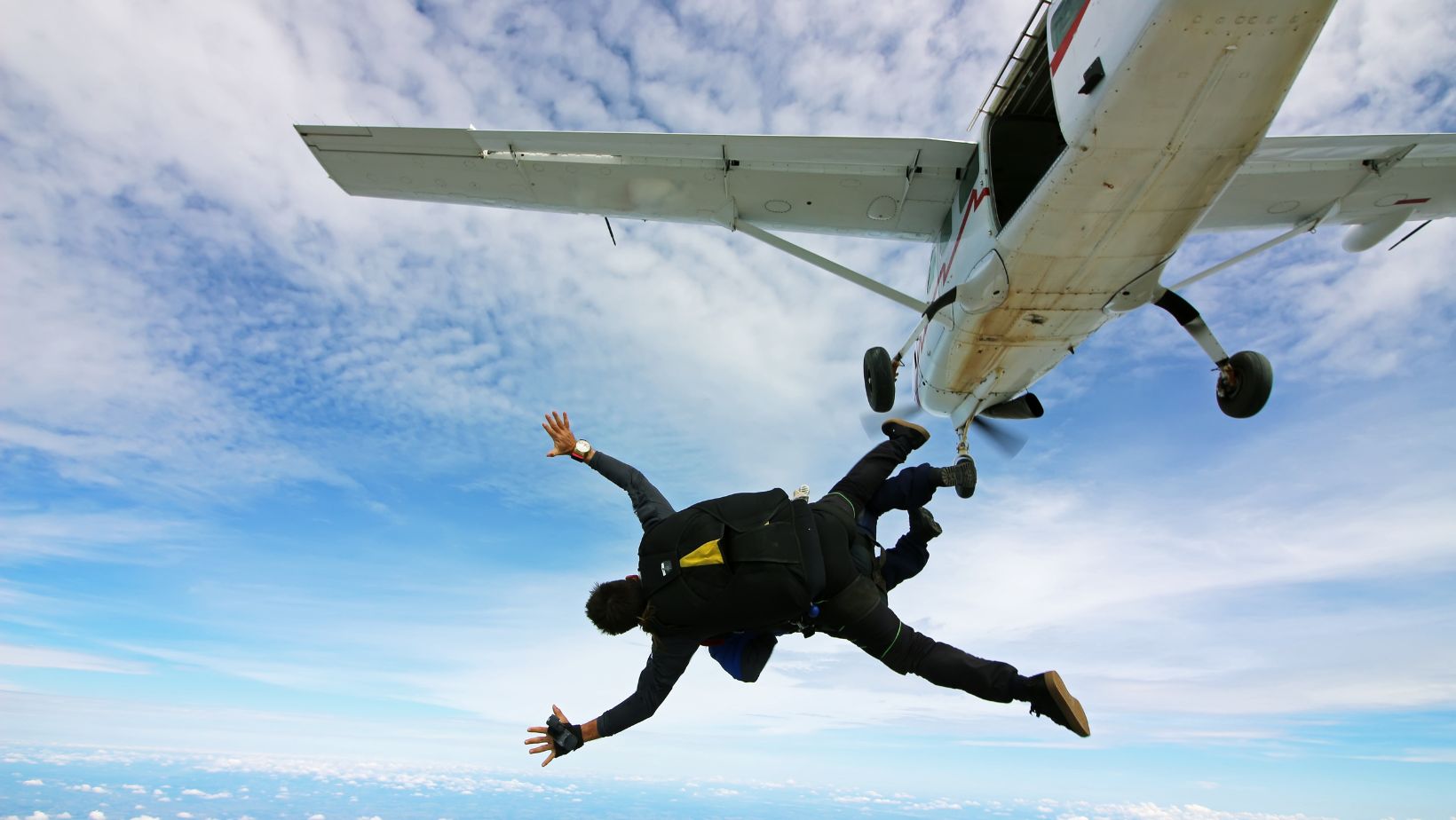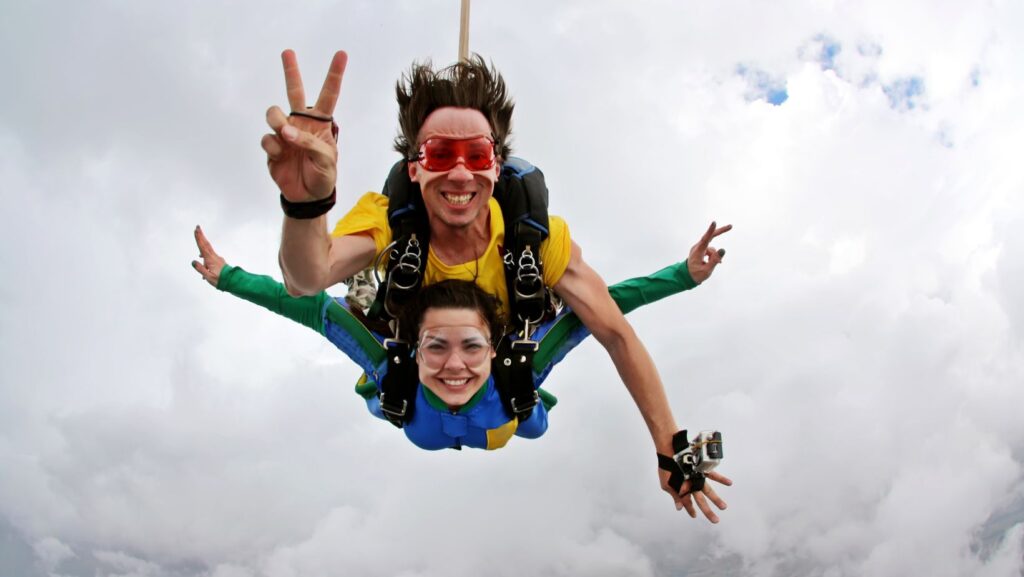So, you’ve tried skydiving, loved it, and now you’re thinking: maybe it’s time to stop renting and start collecting your gear. Smart move! Having your own skydiving equipment means more comfort, better fit, and more freedom to jump where and when you want. But what exactly do you need to purchase, how do you take care of it, and can you protect yourself and your gear with travel insurance for skydiving? Let’s figure it out.
Beginner Skydiver’s Equipment Checklist (AFF or Solo Path)
When you’re learning to skydive, especially through AFF (Accelerated Freefall), there are some basics you’ll need. But don’t worry, you don’t have to get it all at once. Most schools provide skydiving equipment during your training. Still, it’s good to know what’s ahead.
Here are the key skydiving equipment most beginners eventually get:
- Parachute system (main canopy, reserve, and container).
- Automatic Activation Device (AAD).
- Altimeter (digital or analog).
- Helmet (open or full face).
- Jumpsuit.
- Goggles.
- Audible altimeter (optional, but helpful).
What Skydiving Equipment is Provided by Dropzones
Most dropzones take good care of students. When you start, they usually provide everything you need: rigs, helmets, suits, and even logbooks. This helps you focus on learning without the stress of purchasing skydiving clothing right away.

But as you rack up jumps and get closer to license levels, you’ll notice rental costs for equipment add up — and sometimes, gear fit isn’t perfect. That’s when many start considering their own skydiving equipment.
When to Start Purchasing Your Own Skydiving Equipment
There’s no perfect number, but most skydivers start shopping for equipment between 20 and 50 jumps. It depends on your budget, how often you jump, and how serious you are.
Start with a helmet or jumpsuit if you’re unsure. They’re lesser, personal, and something you’ll want to use even when renting a rig. Your own rig usually comes later, but don’t rush. It’s better to rent than to buy something that doesn’t fit your level or body.
A good rule! Once you’re licensed and planning to jump regularly, investing in your own skydiving equipment just makes sense.
Skydiving Equipment Rental vs. Purchase: Cost & Convenience
Here’s a look at the basic cost comparison between renting and purchasing skydiving equipment.
| Item | Rent per Jump (USD) | Purchase Once (USD) |
| Full rig (main, reserve, AAD) | $40–60 | $5,000–9,000 |
| Helmet | $5–10 | $200–600 |
| Jumpsuit | $10 | $300–800 |
| Altimeter | Included/rentable | $100–300 |
| Goggles | Included | $20–50 |
Purchasing hurts at first, but in the long term, it’s lesser if you’re jumping often.
Popular Skydiving Equipment Brands and Maintenance Tips
When you’re ready to buy, stick with known skydiving equipment brands.
- For rigs: Javelin, Mirage, or Vector are top choices.
- For AADs, many trust Vigil or CYPRESS. For helmets, Cookie and Tonfly are fan favorites.
Skydiving equipment doesn’t need daily fixing, but it does need love. Keep your rig dry, pack it right, and have it inspected by a certified rigger.

Avoid sun and moisture – they’re not your gear’s friends. Helmets and altimeters just need occasional cleaning and battery checks. Goggles? Rinse the bugs off, and you’re good!
Travel Insurance for Skydiving
Before you even pack your parachute, let’s talk about something just as important as your skydiving equipment — staying covered. Regular travel insurance won’t help you much if you’re skydiving. It usually doesn’t cover injuries from high-risk sports. That is why you should invest in good travel insurance for skydiving. It’s designed specifically for people jumping out of planes – covering accidents, weather-related injuries, and even emergency evacuations if needed.
What about skydiving equipment protection? Usually, local rental equipment insurance includes damage or loss. But there’s also an option to protect your rented skydiving equipment separately or as part of your luggage. The difference comes down to price — because if it’s only covered as lost baggage, the compensation will be fixed and likely won’t match the real value of expensive skydiving equipment.
Final Thoughts
Purchasing your first set of skydiving equipment is exciting. It means you’re officially part of the skydiving family. Take your time, talk to other jumpers, test what works for you, and don’t be afraid to ask for help. Equipment is personal — what works for one person might not work for another. But with the right setup, every jump becomes a little easier, a lot safer, and way more fun.


